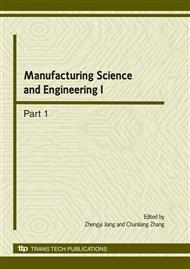p.475
p.479
p.484
p.488
p.492
p.496
p.500
p.504
p.510
Creep Behavior of an AZ91 Magnesium Alloy Reinforced with Aluminum Silicate Short Fibers
Abstract:
Constant stress tensile creep tests were conducted on an AZ 91–25 vol.% aluminum silicate short fiber composite and on an unreinforced AZ 91 matrix alloy. The creep resistance of the composite is shown to be considerably improved compared with the matrix alloy, and the resistance effect is better with the increase of temperature. The steady-state creep rate of the composite is 4.54% of matrix alloy at 473K, and 2.56% of matrix alloy at 573K. The creep strengthening arises mainly from the effective load transfer between plastic flow in the matrix and the fibers. Microstructural investigations by SEM revealed good fiber–matrix interface bonding during creep exposure. Short fibers have a great function in load bearing and transmission load, and greatly hinder the dislocation movement, thus enhancing the creep resistance of the composite. The creep mechanism of the composite is dislocation and grain boundary sliding control.
Info:
Periodical:
Pages:
492-495
Citation:
Online since:
March 2010
Authors:
Keywords:
Price:
Сopyright:
© 2010 Trans Tech Publications Ltd. All Rights Reserved
Share:
Citation:


